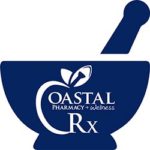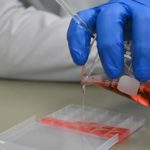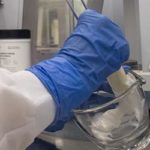
The three major hormones made by ovaries are estradiol, progesterone, and testosterone. When entering menopause, these hormones often become imbalanced, causing a wide range of undesirable side effects. Women entering this phase have numerous options for treating the imbalances. For some, lifestyle modification is all that is necessary. For others, hormone therapy may be required. Hormone therapy has been used for many years, both through commercially-made medication and compounded preparations. Compounded preparations open the door to more individualized treatments and can be tailored to meet the specific needs of a patient.
Custom Tailored Hormone Therapy
 Hormone therapy should not be approached with a “one size fits all” mentality. Some women respond much better when a hormone therapy formula is developed specifically for their body and hormone levels. Pharmaceutical compounding with bioidentical hormones (hormones biochemically identical to those produced by the human body) is a great way to break free from traditional mass-produced hormone therapy by tailoring the medication to a woman’s specific needs. Through compounding, the best possible treatment experience can be achieved by
Hormone therapy should not be approached with a “one size fits all” mentality. Some women respond much better when a hormone therapy formula is developed specifically for their body and hormone levels. Pharmaceutical compounding with bioidentical hormones (hormones biochemically identical to those produced by the human body) is a great way to break free from traditional mass-produced hormone therapy by tailoring the medication to a woman’s specific needs. Through compounding, the best possible treatment experience can be achieved by
- altering base ingredients to avoid allergic reactions,
-
using a topical application to avoid systemic side effects
-
use a dosage form that makes oral medication easier to take (e.g. a flavored lozenge instead of a pill), and
-
customizing hormone types and strengths based on your unique hormone levels.
Compounding allows for greater control of delivery to specific target areas and the rate your body receives therapy. It also provides alternatives to less irritating topical options through hypoallergenic bases and dye-free formulations.
Topical vs Oral Dosage Forms
 Choosing an appropriate dosage form is as important as choosing the correct hormone. Topical bioidentical hormone therapy (BHT) are a common delivery route. Creams, ointments, gels and lotions are some of the more common forms of this method. Topical applications are often a preferred treatment route by practitioners because it minimizes any potential negative system effects that can be associated with oral medications. For those with sensitivities, the likelihood of adverse skin reactions can be reduced with hypoallergenic or natural bases.
Choosing an appropriate dosage form is as important as choosing the correct hormone. Topical bioidentical hormone therapy (BHT) are a common delivery route. Creams, ointments, gels and lotions are some of the more common forms of this method. Topical applications are often a preferred treatment route by practitioners because it minimizes any potential negative system effects that can be associated with oral medications. For those with sensitivities, the likelihood of adverse skin reactions can be reduced with hypoallergenic or natural bases.
An example of a targeted BHT therapy is the use vaginal creams, suppositories or capsules for a condition called vaginal atrophy. By introducing BHT directly to the area of concern, you apply medication where it is required and avoid distribution of hormones to areas where it is not needed. Research has indicated that the use of localized estrogen therapy has produced reported improvement of symptoms such as vaginal dryness, pain, and overall quality of life.
Combination Hormone Therapy
Compounding also allows for creating combination BHT. Combining various hormones into a single medication can provide a multitude of benefits. It eliminates the need to take multiple medications with different ingredients. All necessary hormones are combined into one medication. It can make taking medications easier and is often more cost effective.
The Case for Bioidentical Hormones
In a study published in the International Journal of Pharmaceutical Compounding, women using compounded BHT reported significant improvement of post-menopausal symptoms when compared to synthetic hormone therapy.1 Since bioidentical hormones mimic the molecular structure of human hormones, women also reported a lower incidence of adverse side effects such as weight gain, difficulty sleeping, and bloating.
Investigate All Options
If you’re entering menopause, it’s important to educate yourself on all treatment options. It’s equally important to talk with a practitioner who is well-versed in your treatment options. Our pharmacists are available to work with you and your practitioner to help you achieve the best possible treatment outcomes.
For more on compounding visit our compounding information page.
References
- Deleruyelle, LJ. International Journal of Pharmaceutical Compounding. Menopausal Symptom Relief and Side Effects Experienced by Women Using Compounded Bioidentical Hormone Replacement Therapy and Synthetic Conjugated Equine Estrogen and/or Progestin Hormone Replacement Therapy, Part 3. Retrieved from https://www.ncbi.nlm.nih.gov/pubmed/28346192 March 27, 2017.



